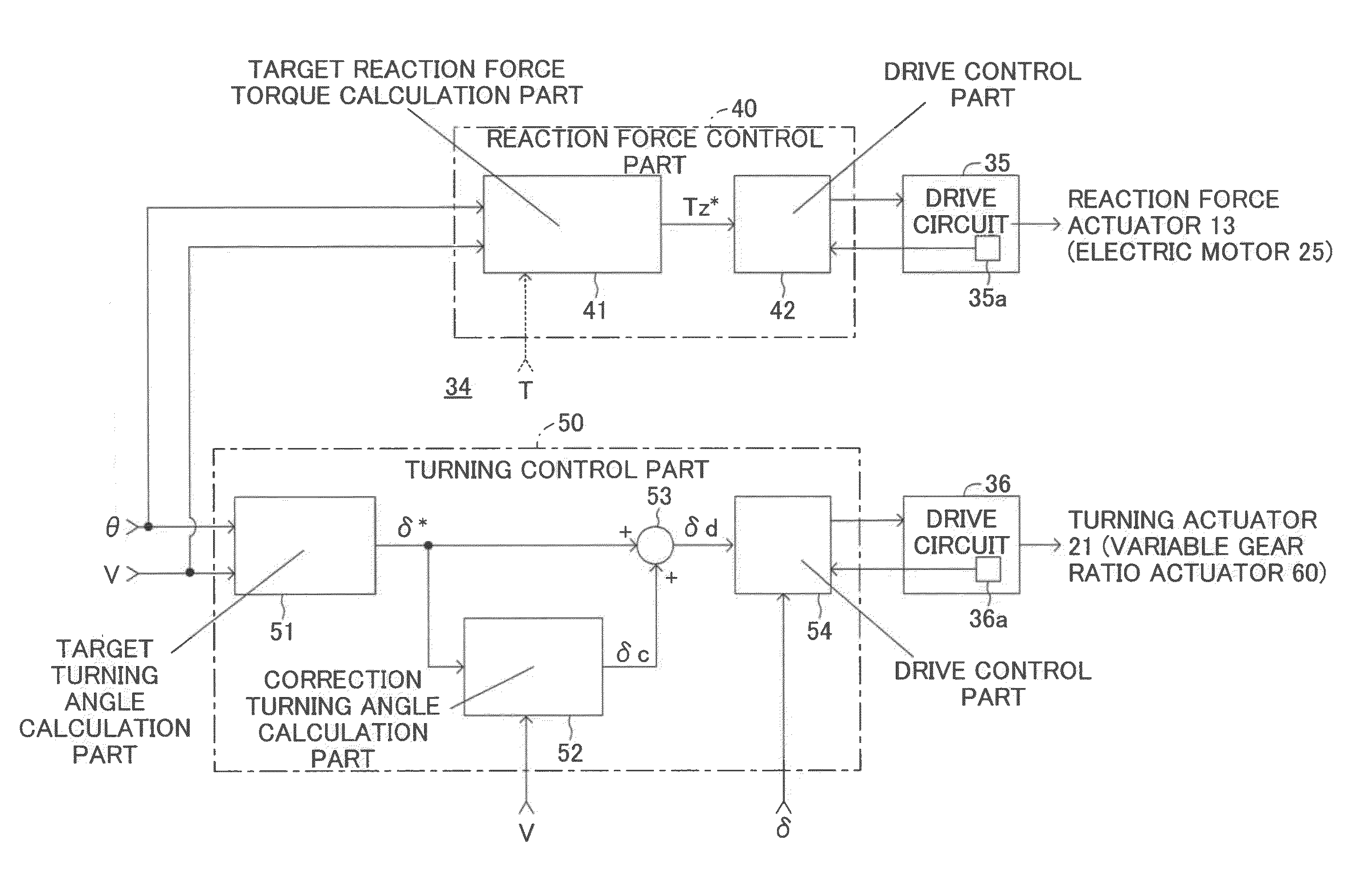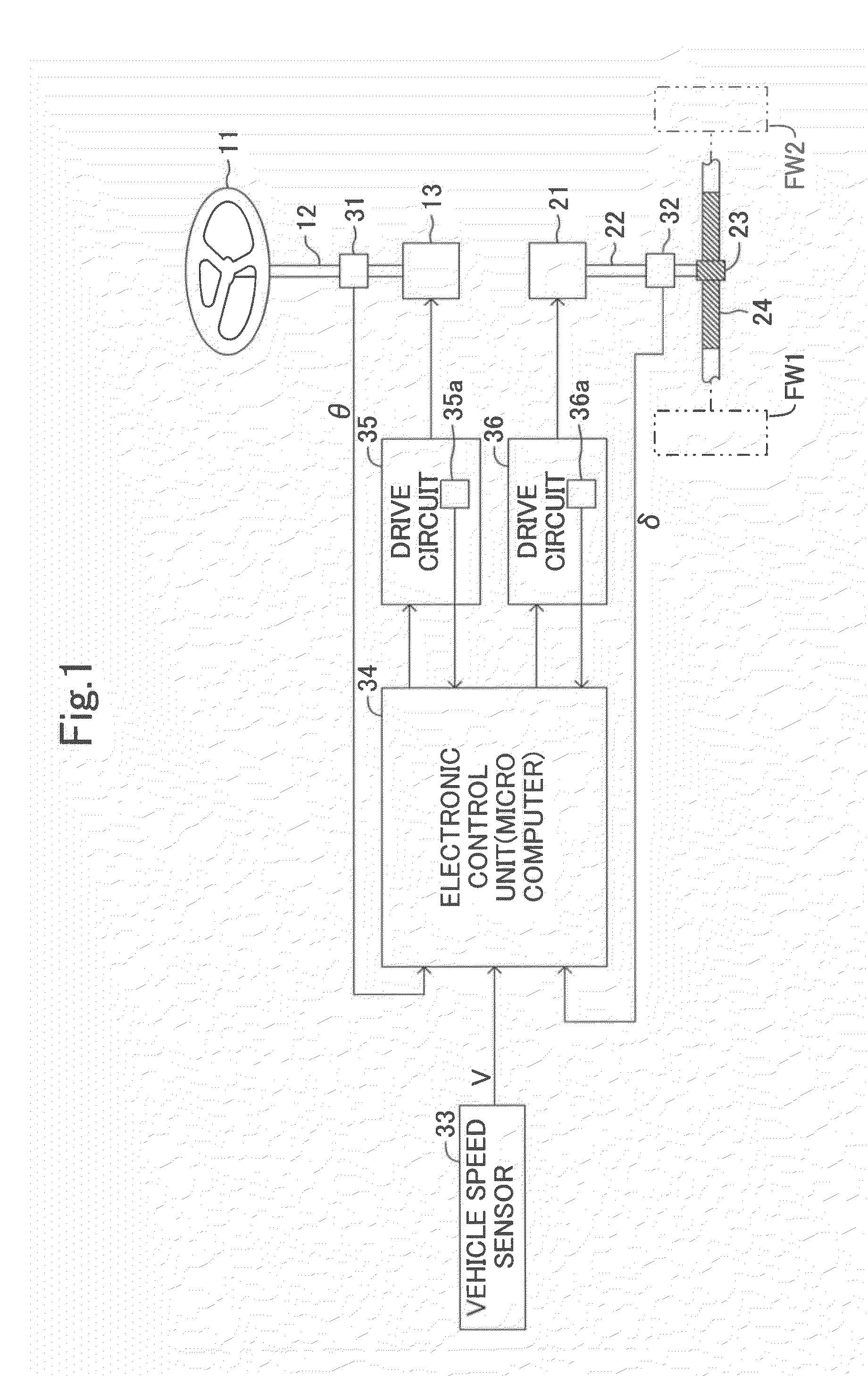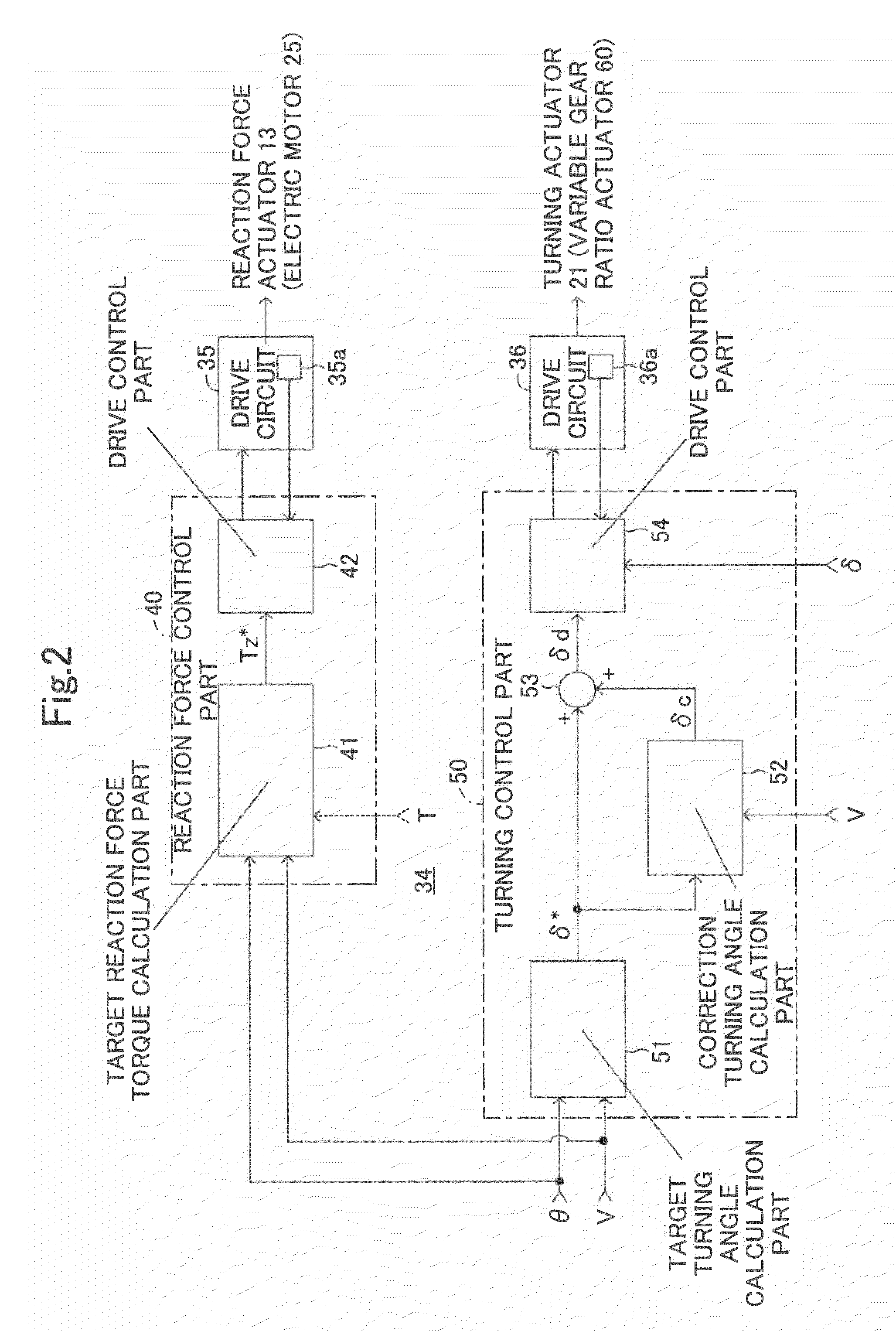Steering device of vehicle
a steering device and vehicle technology, applied in the direction of non-deflectable wheel steering, process and machine control, underwater equipment, etc., can solve the problems of reduced directional stability of the vehicle, driver may feel strangeness, etc., and achieve the effect of reducing the operation load when the driver operates the steering wheel
- Summary
- Abstract
- Description
- Claims
- Application Information
AI Technical Summary
Benefits of technology
Problems solved by technology
Method used
Image
Examples
first embodiment
a. First Embodiment
[0044]Below, steering devices of vehicles of the embodiments of the invention will be explained in detail by referring to the drawings. FIG. 1 schematically shows a steering device of a vehicle common to the first and second embodiments of the invention.
[0045]The steering device of the vehicle has a steering wheel 11 as an operation part which is rotated by the driver to turn right and left front wheels FW1 and FW2 which are wheels to be turned. The steering wheel 11 is secured to an upper end of a steering force input shaft 12, and a lower end of the steering force input shaft 12 is connected to a reaction force actuator 13 constituted by an electric motor and a reducer mechanism. The reaction force actuator 13 applies a reaction force to the rotation operation of the steering wheel 11 by the driver.
[0046]Further, the steering device of the vehicle has a turning actuator 21 constituted by an electric motor and a reducer mechanism. The turning force generated by t...
second embodiment
b. Second Embodiment
[0092]In the above-explained first embodiment, the correction turning angle calculation part 52 determines the transfer function K(s), which has as an input the target turning rate δ*′ and as an output the correction turning angle δc, by using the difference between the transfer function G(s) indicating the transient responsiveness property, which transfer function has as an input the turning angle δ and as an output the yaw rate γ, and the stationary component G(0) of the transfer function G(s). Further, the correction turning angle δc, which depends on the target turning rate δ*′, is calculated by using the transfer function K(s). Thereby, the change of the frequency responsiveness property of the yaw rate γ can be restricted, the directional stability of the vehicle at the high vehicle speed range can be ensured and the lag of the responsiveness at the low vehicle speed range can be improved.
[0093]In this regard, in the common vehicle, as shown in FIG. 10A, a ...
third embodiment
c. Third Embodiment
[0119]In the above-explained first and second embodiments, the steering-by-wire system, which the mechanical connection between the steering wheel 11 and the right and left front wheels FW1 and FW2 is released, is employed as the steering device of the vehicle. In this case, as shown in FIG. 15, the variable gear ratio steering device, which the steering gear ratio (the transmission ratio) can freely be adjusted, may be employed. Below, the third embodiment will be explained in detail, however, the same parts as those of the first and second embodiments are indicated by the same reference symbols as those of the first and second embodiments and the explanations thereof will be omitted.
[0120]In the steering device of the vehicle of the third embodiment, the reaction force actuator 13 and the turning actuator 21 of the first and second embodiments are omitted, and the steering force input shaft 12 and the turning force output shaft 22 are connected to each other by ...
PUM
 Login to View More
Login to View More Abstract
Description
Claims
Application Information
 Login to View More
Login to View More - R&D
- Intellectual Property
- Life Sciences
- Materials
- Tech Scout
- Unparalleled Data Quality
- Higher Quality Content
- 60% Fewer Hallucinations
Browse by: Latest US Patents, China's latest patents, Technical Efficacy Thesaurus, Application Domain, Technology Topic, Popular Technical Reports.
© 2025 PatSnap. All rights reserved.Legal|Privacy policy|Modern Slavery Act Transparency Statement|Sitemap|About US| Contact US: help@patsnap.com



